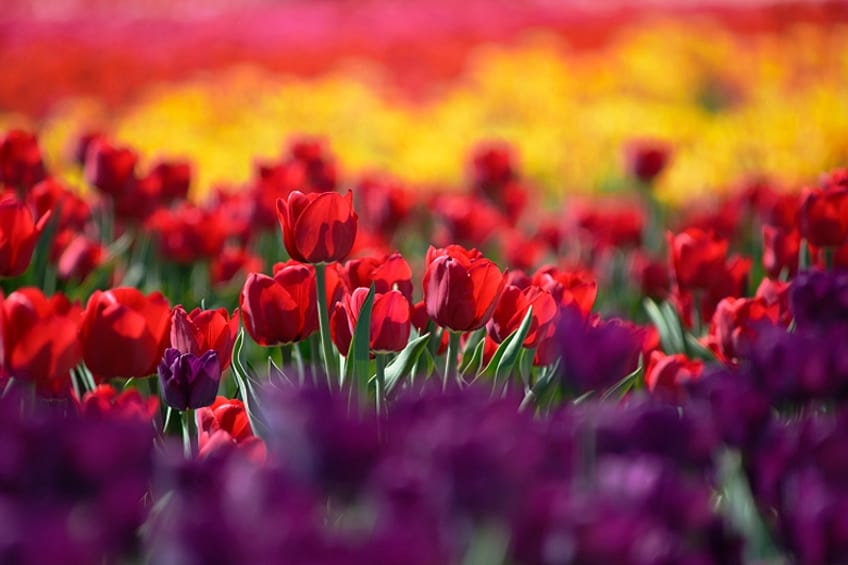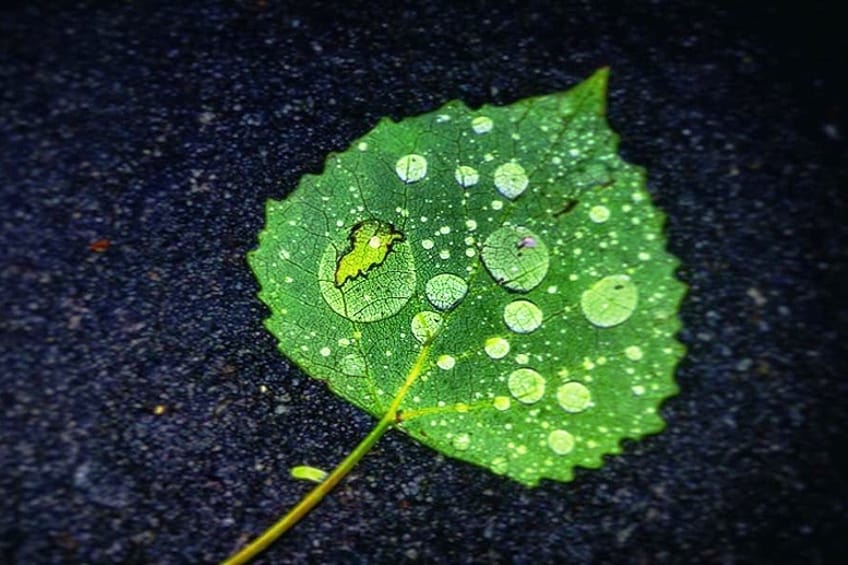Composition in Photography – The Rule of Thirds and Beyond
Composition in photography is the invisible conductor behind captivating imagery, embodying an artistic finesse that transcends explanation. Encapsulated within the delicate interplay of elements, composition in photography beckons exploration. It is not just about deciphering what is composition photography, but rather a mysterious dance where lines, shapes, and perspectives converge to evoke emotions and intrigue. Within this enigmatic realm of photo composition lies an invitation that urges viewers with an allure to unravel the visual poetry embedded in every frame.
Table of Contents
What Is Composition in Photography?
Composition in photography is the silent language that speaks volumes through the mere placement of various visual elements within the frame. It is one of the defining techniques of visual storytelling, one that requires a delicate balance between technical precision and artistic intuition. But what is composition photography exactly? It is more than mere visual arrangement; it is the deliberate orchestration of lines, shapes, colors, and perspectives that guide the viewer’s eye through a narrative, influencing emotions and perceptions.
At the core of composition in photography, it is not constrained by rigid rules but rather led by principles that serve as a roadmap for creating compelling imagery.
The rule of thirds, perhaps the most fundamental principle, divides the frame into thirds both horizontally and vertically, suggesting that points of interest should align with these intersecting lines or their vicinity. This technique brings harmony and dynamism to the composition, guiding the viewer’s gaze and infusing a sense of balance into the visual narrative. Leading lines, another crucial aspect of photo composition, can be seen as subtle lines that are created within the frame, directing attention toward the main subject or focal point. They could be roads, fences, rivers, or any distinct lines that draw the eye deeper into the image, adding depth and guiding the viewer through the photographer’s intended story. These lines serve as visual cues, influencing the audience’s perception and creating a sense of movement or direction within the static frame.

Moreover, the concept of framing within composition in photography encapsulates using elements within the scene to create a natural border or frame around the primary subject. Whether it is an archway, branches, windows, or any other element that encircles or partially covers the subject, framing adds depth and context while drawing attention to the main focus of the image. Understanding the relationship of positive and negative spaces within the frame is paramount in photo composition. The positive space refers to the main subjects or elements within the frame, while the negative space is the empty or open areas surrounding the subjects. Balancing these spaces effectively can evoke different emotions and emphasize the subject’s significance within the composition. A well-utilized negative space can evoke tranquility and minimalism, or even amplify the impact of the main subject.
Color and contrast play an integral role in composition in photography.
The strategic use of complementary or contrasting colors can enhance the visual impact, create depth, and evoke certain moods or emotions. Moreover, contrast in tones, textures, or lighting can accentuate the subject, adding drama or highlighting subtleties within the frame.

In essence, composition in photography is the visual grammar that photographers use to articulate their narratives. It is a visual way of communication that transcends barriers, speaking directly to the soul of the audience. From the meticulous arrangement of elements to the nuanced understanding of light and shadow, photo composition is an art form that celebrates the beauty of visual storytelling. It is the harmonious amalgamation of technical expertise, creative vision, and emotional resonance that transforms a simple image into a timeless masterpiece.
Why Composition Matters in Photography
Composition in photography is not just a technical aspect but the heartbeat that gives life and meaning to an image. It stands as the invisible force that shapes the visual narrative, guiding the audience’s gaze, and communicating emotions and stories. But why does composition matter in photography? It matters because it is the gateway to unlocking the true potential and impact of an image, transcending the mere act of capturing a moment into creating a compelling visual symphony. At its essence, what is composition photography if not the deliberate arrangement of elements within the frame? It is the conscious decision-making process that transforms an ordinary scene into an evocative story.
Whether it is the rule of thirds, leading lines, or the careful consideration of positive and negative space, photo composition serves as the linchpin that holds the viewer’s attention and sparks their imagination.
The significance of composition in photography is profound. It provides photographers with the ability to guide the viewer’s eye, shaping how they perceive and interpret the image. The rule of thirds, another foundational principle, involves dividing the frame into nine equal parts by two horizontal and two vertical lines, which creates reference points for placing key elements into your composition. Placing subjects at these intersecting points or along these lines fosters balance and visual interest, drawing the audience deeper into the image.

Moreover, leading lines are like visual pathways that direct the viewer’s attention towards the main subject or focal point within the frame. Whether it is a winding road, a row of trees, or a shoreline, these lines create a visual journey, guiding the eyes through the composition, adding depth and intrigue to the narrative. The use of framing within photo composition is akin to creating a window into the intended story. By utilizing elements within the scene to naturally frame the subject, photographers can add layers of context and draw attention to the primary focal point. This technique not only adds depth but also offers a sense of inclusion, as if the viewer is peering into a world carefully curated by the photographer.
Furthermore, understanding the power of negative space and its interplay with positive elements is pivotal.
The judicious use of empty or open spaces surrounding the main subject can evoke emotions, set moods, and emphasize the subject’s significance within the composition. It is the delicate balance between these spaces that can dictate the tone and atmosphere of an image. Color, contrast, and texture also hold sway in the realm of composition in photography. The strategic use of color palettes, contrasting tones, or textures can enhance visual impact, evoke emotions, and create a sense of depth within the frame. They act as tools that amplify the message and emotional resonance of the image.
In conclusion, the importance of composition in photography cannot be overstated. It serves as the bridge between a mere photograph and a captivating story. It matters because it elevates images from being ordinary to extraordinary, creating an emotional connection between the viewer and the visual narrative. It is the mastery of these composition techniques that enables photographers to craft images that linger in the minds and hearts of their audience, transcending time and leaving an indelible mark on the world of art.
The Elements of Composition
The elements of composition in the realm of visual storytelling are akin to a painter’s palette, each brushstroke defining the essence of a captivating narrative. These elements – lines, shapes, colors, textures, and space – coalesce into a harmonious symphony within the frame. Lines guiding the eye, shapes form the foundation, colors evoke emotion, textures add depth, and space breathes life into the composition. Their interplay is the artful dance that photographers master, weaving stories that transcend the boundaries of the captured moment.
These elements, like notes in a melody, converge to create imagery that resonates deeply within the souls of beholders.
Rule of Thirds
The rule of thirds stands as a foundational principle in the art of photography, a guiding light that shapes the composition with an innate sense of balance and intrigue. By dividing the frame into a grid of nine equal parts – two horizontal lines intersecting with two vertical lines – the rule suggests that aligning key elements or subjects along these lines or at their intersections yields a visually pleasing and harmonious result. This principle invites photographers to deviate from centering subjects, urging them instead to embrace asymmetry and dynamic framing. Placing focal points at these intersecting points or along the lines infuses the image with a sense of movement, guiding the viewer’s gaze purposefully. It encourages the exploration of varied perspectives and emphasizes the significance of negative space, allowing breathing room for the subject to shine within the frame.

The rule of thirds is not merely a mechanical guideline but a tool that fosters compositional storytelling. It empowers photographers to create compelling narratives, evoke emotions, and draw the audiences into a visual dialogue. Embracing this principle unleashes a world of possibilities, where every click of the shutter captures not just as a moment, but a meticulously crafted tale that speaks volumes without uttering a single word. Ultimately, the rule of thirds embodies the artistry and precision behind a visually captivating photograph, forever influencing the way photographers view and frame their subjects.
Leading Lines
In the realm of photography, leading lines are the subtle conductors guiding the viewer’s gaze through a visual narrative, effortlessly drawing attention toward a focal point or subject. These lines, whether they be natural or man-made, hold an innate power to direct the eye, creating a sense of movement, depth, and purpose within the frame. They weave through the composition like threads of a narrative tapestry, inviting exploration and guiding the viewer on a visual journey. Be it the curves of a winding road, the edges of buildings, or the patterns in nature, these lines serve as visual cues, encouraging the audience to delve deeper into the photographer’s intended story.
Leading lines possess the remarkable ability to add dimensionality and depth, creating a sense of perspective that transcends the two-dimensional nature of a photograph.
They can evoke emotions, impart a sense of direction, and imbue a photograph with a dynamic energy that propels the viewer’s engagement. By strategically incorporating leading lines into compositions, photographers wield a powerful tool to captivate their audiences. These lines not only enhance the visual impact but also serve as pathways that invite viewers to explore every nook and cranny of the image. They are not merely elements within the frame but silent guides that infuse vitality and purpose into every photograph, inviting observers to embark on an unforgettable visual voyage. Ultimately, leading lines epitomize the artistry and finesse of composition, showcasing the photographer’s skill in orchestrating a captivating visual narrative.
Framing
Framing in photography is akin to a skilled artisan crafting a window into an intricate world, using elements within the scene to encapsulate and accentuate the intended subject. It is the artful technique of using natural surroundings, architectural features, or objects to create a visual border within the frame, drawing attention to the primary focal point and adding layers of context to the narrative. By ingeniously framing a subject, photographers elevate the significance of the main element, embedding it within a context that enriches its meaning. Whether it is an archway embracing a scenic landscape, branches forming a natural vignette, or a window framing a poignant moment, these elements serve as gateways, inviting viewers to immerse themselves into the heart of the story.

Framing transcends the mere act of containment; it creates a sense of intimacy, drawing the viewer closer to the subject while simultaneously providing a sense of breadth to the overall composition. It not only emphasizes the subject’s importance but also offers a subtle visual guide, directing attention and conveying the photographer’s intended narrative flow. The art of framing in photography, when mastered, transforms a static image into an immersive experience. It is a testament to the photographer’s keen eye – a deliberate decision-making process that curates the viewer’s perspective and encourages exploration within the frame. Ultimately, framing is the delicate fusion of context, composition, and storytelling, revealing that within the confines of a well-framed image lies an entire universe waiting to be discovered.
Balance and Symmetry
Balance and symmetry in photography are the silent architects of visual equilibrium, harmonizing elements within the frame to create a sense of stability, order, and aesthetic appeal. They orchestrate a delicate dance where every visual component finds its rightful place, fostering a serene and captivating composition. Balance, in its essence, is the distribution of visual weight within an image. It transcends the mere placement of objects but encompasses the equilibrium between contrasting elements. Whether achieved through symmetrical arrangements or by juxtaposing different elements in a calculated manner, balance instills a feeling of tranquility and completeness, engaging the viewer’s eye effortlessly. Symmetry, a close ally of balance, involves mirroring elements on either side of an axis, fostering a sense of harmony and order. It provides a sense of familiarity and draws the viewer’s attention, allowing them to appreciate the precision and uniformity present within the frame.
Photographers wield balance and symmetry as tools to create compositions that evoke a sense of visual satisfaction.
Whether it is the symmetry found in architectural marvels or the balance between light and shadow in a natural landscape, these elements invite contemplation and appreciation. Moreover, they serve as conduits for storytelling, guiding the viewer’s gaze through the narrative with a sense of purpose. When skillfully employed, balance and symmetry transcend the confines of the image, resonating deeply within the viewer’s psyche, and leaving an enduring impression that transcends time and space. In the art of photography, the mastery of balance and symmetry is not just about technical precision; it is a testament to the photographer’s vision and their ability to orchestrate a visual symphony that captivates and enchants, inviting viewers into a world where equilibrium reigns supreme.
Patterns
Patterns in photography are the visual poetry etched into the fabric of our surroundings, revealing mesmerizing repetitions that captivate the eye and stir the imagination. They exist ubiquitously in nature’s intricate designs, architectural marvels, and the nuances of everyday life, offering a symphony of rhythm and order within the frame. Photographers harness the allure of patterns to create compositions that resonate deeply with the viewer. These repetitive motifs, whether found in the tessellation of leaves, the geometric precision of urban landscapes, or the rhythm of waves crashing upon the shore, possess an innate ability to evoke a sense of familiarity and aesthetic pleasure. Patterns in photography transcend the mundane; they serve as visual anchors that lead the eye on a mesmerizing journey.

They add a layer of complexity to an image, inviting viewers to decipher the intricacies within the repetition, uncovering hidden stories and compelling narratives. Moreover, patterns infuse images with a sense of dynamism and visual interest. They play with light and shadow, guiding the viewer’s gaze through a mesmerizing dance of shapes and forms. Patterns also evoke a sense of harmony, eliciting a feeling of serenity or excitement, depending on their arrangement and context. In essence, patterns in photography are not just the repetition of shapes or elements; they are an exploration of visual rhythm and symphony. They serve as a visual language, inviting viewers to appreciate the beauty found in repetition, unlocking a world of mesmerizing intricacies that elevate the ordinary into the extraordinary.
Repetition
Repetition in photography is the enchanting melody woven through the visual tapestry, where echoes of similar elements creates a mesmerizing rhythm within the frame. It is the artful recurrence of shapes, patterns, or motifs that captivate the eye and infuse the image with a captivating sense of order and harmony. Photographers harness the power of repetition to orchestrate compositions that resonate deeply with viewers. Whether it is the symmetry of arches in architectural wonders, the uniformity of trees in a forest, or the rhythmic sequence of waves crashing on the shore, repetition bestows a sense of continuity and visual allure upon an image.
The magic of repetition lies not merely in the recurrence of elements but in the storytelling it facilitates. These recurring motifs serve as visual cues, guiding the viewer’s eye through a captivating journey within the frame. They establish a sense of structure, drawing attention, and evoking a profound sense of fascination.
Moreover, repetition in photography is not solely about visual aesthetics; it is a gateway to emotional resonance. It can convey a sense of comfort, order, or even evoke curiosity and surprise. The deliberate repetition of elements captivates the viewer’s attention, inviting contemplation and offering a deeper appreciation of the visual symphony crafted by the photographer. Ultimately, repetition in photography is the rhythm that orchestrates a visual masterpiece, transforming the ordinary into a mesmerizing spectacle. It is a testament to the photographer’s keen eye and ability to weave a tale of continuity and allure, inviting viewers to discover beauty in the echoes that reverberate throughout the frame.
Color and Contrast
Color and contrast in photography are the maestros orchestrating the visual symphony, infusing images with depth, emotion, and storytelling prowess. They serve as the palette with which photographers paint the canvas of their compositions, harnessing hues and tonal variations to evoke profound sensations and amplify the impact of their visual narratives. The intricate interplay of colors within a frame holds the power to mesmerize and captivate. Vibrant hues can evoke joy, while subdued tones may evoke contemplation or serenity. Photographers strategically employ colors to create mood, convey emotion, and even guide the viewer’s focus within the image. Contrast, on the other hand, adds a dimension of drama and depth to photography. It is the interplay between light and dark, between elements that stand out and those that recede into shadows.

High contrast accentuates textures, defines shapes, and brings a dynamic energy to the composition, while low contrast imparts a softer, more nuanced aesthetic. The synergy between color and contrast is where the magic truly unfolds. Bold contrasts amplify the impact of colors, creating visual tension or harmony, depending on the photographer’s intent. The judicious use of complementary or contrasting colors against a backdrop of well-managed contrast can elevate an image, drawing the viewer deeper into the photographer’s intended narrative. Ultimately, color and contrast in photography are not just visual elements; they are emotive tools that breathe life into images. They transcend the technical aspects, becoming the emotional conduits that resonate with viewers, stirring emotions, and etching lasting impressions long after the image is seen.
Negative Space
Negative space in photography is the silent partner that speaks volumes within the frame, the unoccupied void that shapes the narrative and heightens the significance of the subject. It is the deliberate and purposeful use of empty or open areas surrounding the main subject, creating a compelling visual balance that invites contemplation and resonates with profound simplicity. This void is not merely an absence; it is a canvas waiting to be explored. The strategic placement of negative space offers breathing room within the composition, allowing the subject to assert its presence with enhanced prominence. It is a pause amidst the visual chaos, guiding the viewer’s gaze and allowing moments of reflection.
Photographers wield negative space as a powerful tool to evoke emotions and convey messages.
Whether it is the vast expanse of sky framing a solitary figure or the quiet emptiness surrounding a striking object, the intentional use of negative space crafts a visual dialogue, drawing attention to the subject’s significance while instilling a sense of serenity or isolation.

Furthermore, negative space is not about what is missing but what it implies. It invites the viewer to fill in the gaps, fostering curiosity and inviting interpretation. The silence it embodies creates a visual tension that captivates the imagination, urging viewers to explore the unspoken story within the frame. Ultimately, negative space in photography is not an afterthought; it is a deliberate and eloquent choice that amplifies the impact of the subject, transforming a seemingly empty void into a canvas where emotions and narratives are etched, leaving an indelible mark on the viewer’s perception.
Composition in photography is the sublime marriage of technique and artistry, where visual elements harmonize to narrate stories that transcend time. It is not confined by rules but guided by principles that beckons the photographer’s creativity and intuition. From the rule of thirds to leading lines, framing, balance, and beyond, these elements intertwine to create captivating imagery. Yet, beyond technique, composition is a language – a silent dialogue between the photographer and the viewer, inviting interpretation and emotional connection. It is the symphony that turns a mere photograph into a masterpiece, forging an everlasting bond between the image and its beholder, transcending the boundaries of the captured moment.
Frequently Asked Questions
What Is Composition in Photography?
Composition in photography refers to the arrangement of visual elements within the frame to create a compelling and harmonious image. It involves the strategic placement of subjects, lines, shapes, colors, and other elements to convey a story or evoke emotions.
Why Is Composition Important in Photography?
Composition is crucial in photography as it guides the viewer’s eye, creates visual interest, and enhances the storytelling aspects of an image. A well-composed photograph can significantly impact how the audience perceives and connects with the subject or narrative.
How Can I Improve My Composition Skills in Photography?
Improving composition skills involves practice, observation, and experimentation. Study and analyze photographers that you admire, learn about different composition techniques, and practice implementing them in your own photography. Experimenting with angles, perspectives, and framing can also help to refine your composition skills.
Duncan completed his diploma in Film and TV production at CityVarsity in 2018. After graduation, he continued to delve into the world of filmmaking and developed a strong interest in writing. Since completing his studies, he has worked as a freelance videographer, filming a diverse range of content including music videos, fashion shoots, short films, advertisements, and weddings. Along the way, he has received several awards from film festivals, both locally and internationally. Despite his success in filmmaking, Duncan still finds peace and clarity in writing articles during his breaks between filming projects.
Duncan has worked as a content writer and video editor for artincontext.org since 2020. He writes blog posts in the fields of photography and videography and edits videos for our Art in Context YouTube channel. He has extensive knowledge of videography and photography due to his videography/film studies and extensive experience cutting and editing videos, as well as his professional work as a filmmaker.
Learn more about Duncan van der Merwe and the Art in Context Team.
Cite this Article
Duncan, van der Merwe, “Composition in Photography – The Rule of Thirds and Beyond.” Art in Context. December 14, 2023. URL: https://artincontext.org/composition-in-photography/
van der Merwe, D. (2023, 14 December). Composition in Photography – The Rule of Thirds and Beyond. Art in Context. https://artincontext.org/composition-in-photography/
van der Merwe, Duncan. “Composition in Photography – The Rule of Thirds and Beyond.” Art in Context, December 14, 2023. https://artincontext.org/composition-in-photography/.









